Perfect is a relative thing for an illustrated book. It requires a balance of content, art, pacing, text and unquantifiable characteristics that are combined into a book that reaches audiences regardless of where they live or what they do. Prairie Days is that sort of book. Think of a hot, summer day on the prairie and this book scorches its way into your memory. It all but leaves wet footprints in your house from the pond, with just a couple traces of dirt and rogue straws of hay strewn about the area where kids have tracked them in.
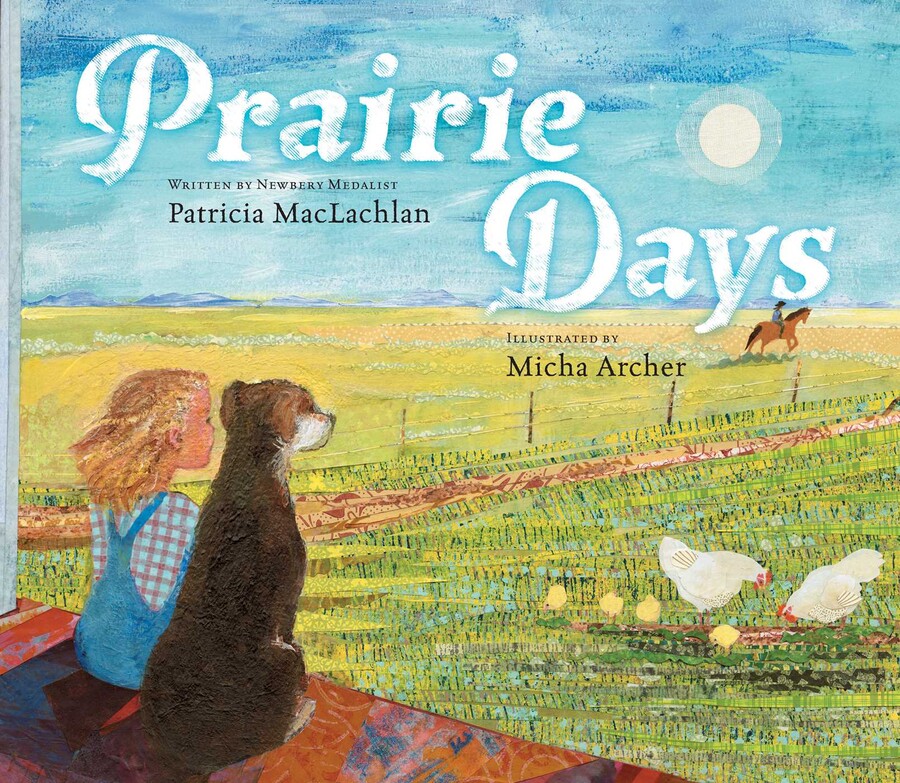
Some people who read Prairie Days will come for the art and stay for the words. Others will be attracted to the succinct poetry stanzas and then realize just how perfectly the art goes along with them. To that, credit goes to the author, Patricia MacLachlan and Micha Archer, who did the illustrations.
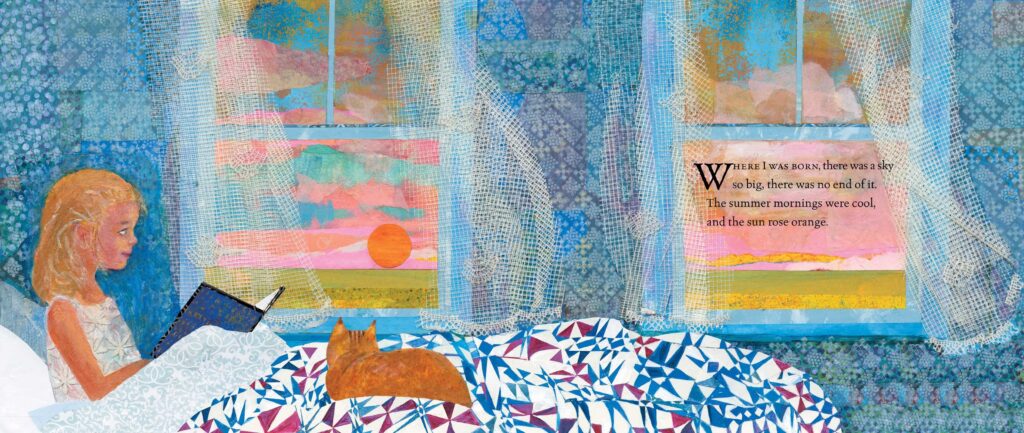
I’ve never been the prairie per se. I imagine it to be this farm area that exists someplace that’s outside of the city. I have been the country, but the country is different than the prairie. To me, a prairie has a lifestyle and personality unto its own. The beauty of Prairie Days is that the book makes you want to visit the prairie even if you haven’t heard of it before now.
It takes place during a typical summer day. A young girl wakes up with the windows open and a sky as big as you’ve ever seen on the other side. As morning keeps going we see a young boy lying in the field with a dog and some hollyhocks. I don’t know how hollyhocks smell, but in my mind’s prairie eye it smells cool and refreshing. The country roads open up four opportunities to travel and some classic looking Model T is headed to town.
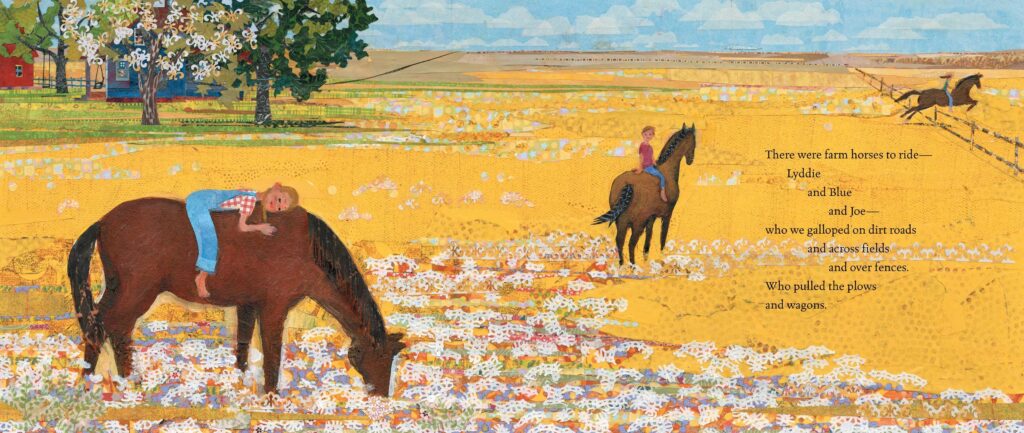
We see horses sauntering through yellow fields with kids lazily sprawled out on their backs. There is a train passing a series of horse drawn carriages as they queue up to drop off their grain. The sheep are being corralled out of their area by a pair of sheep dogs who are only too happy to engage their instincts. In town, there’s a stereotypical cowboy who greets mom with something that you’d expect to see in a classic western. As the sun goes down the shadows get stark and long as landscape has nothing to resist its descent.
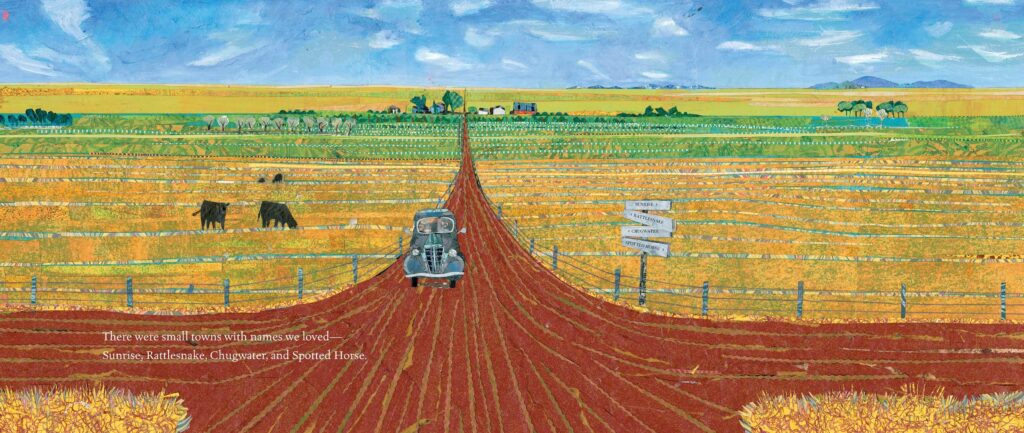
On many pages, especially those that happen in the morning or around sunset, Archer’s illustrations are more akin to something that you’d see in a museum than a children’s illustrated book. That’s not a slight against other illustrators or other books. It’s just that the illustrations in this book are so rich in detail that it makes the book effortless to look at. Using acrylics, ink and collage her art gives readers a clue into what Eric Carle’s illustrations would resemble if they were provided a bigger canvas and a more advanced story.
The landscape format of Prairie Days also fits it perfectly. The panoramic views presented in the book mirror a scaled down window of what we’d see if the prairie were directly in front of us. For old school television people, it’s the difference of seeing Dances With Wolves on a square television and then seeing it on a modern HD television with surround sound. The combination of art and illustration in Prairie Days combine to make it much more of the later.
There are affiliate links in this post, because, varmints.

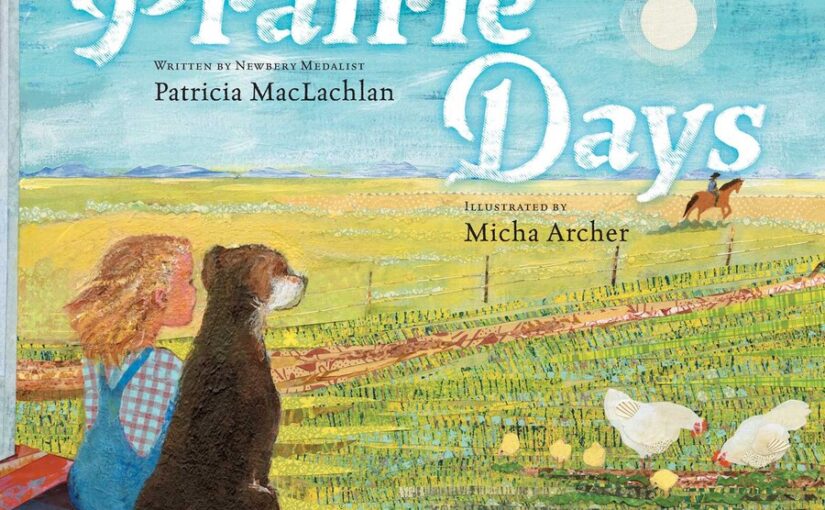



 Facebook
Facebook Twitter
Twitter Flickr
Flickr GooglePlus
GooglePlus Youtube
Youtube